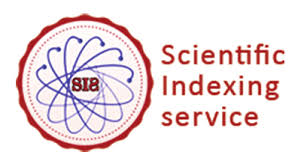Classification of Lung and Colon Cancer Histopathological Images using a Novel Artificial Intelligence Method
DOI:
https://doi.org/10.30855/AIS.2024.07.02.02Keywords:
Artificial intelligence, deep learning, transfer learning, auxiliary layer, stratified k-fold cross-validation, lung and colon cancerAbstract
Cancer is a disease in which cells acquire autonomous growth, genetic instability, and significant metastatic strength, and is considered one of the most common causes of death worldwide. The most important types of cancer-causing these deaths are lung and colon cancers. Although they are rarely seen at the same time, the rate of metastasis of cancerous cells between these two organs is quite high if not diagnosed early. Histopathological diagnosis and appropriate treatment are the only ways to distinguish cancer types and reduce cancer death rates. The use of artificial intelligence in histopathological diagnosis can also provide experts with significant assistance with less effort, time, and cost.
In this study a dataset, containing 25000 histopathological images belonging to 5 classes to classify colon and lung cancer types, was used. In order to obtain successful classification results from this dataset, the versions of the DenseNet algorithm, one of the deep learning algorithms, (DenseNet121, DenseNet169, and DenseNet201) were used firstly. Then, 3 novel models (DenseNet121_Improved, DenseNet169_Improved, and DenseNet201_Improved) were proposed by adding a cut-point layer, an auxiliary layer, and making frozen status improvements to the versions of the DenseNet algorithm. Versions of the DenseNet algorithm and proposed models were trained with stratified k-fold cross-validation technique first on colon cancer containing 2-class histopathological images, then lung cancer containing 3-class histopathological images, and lastly on 5-class histopathological images containing both colon and lung cancer. Finally, classification success rates were obtained. According to the experimental results performed on 3 different datasets, 97.60%, and 98.48% classification success rates in the lung cancer dataset and in both colon and lung cancer datasets were obtained respectively. The best classification success rate was achieved with DenseNet201_Improved, which was recommended with 99.80% in the colon cancer dataset.
Downloads
Published
How to Cite
Issue
Section
License
Artificial Intelligence Studies (AIS) publishes open access articles under a Creative Commons Attribution 4.0 International License (CC BY). This license permits user to freely share (copy, distribute and transmit) and adapt the contribution including for commercial purposes, as long as the author is properly attributed.

For all licenses mentioned above, authors can retain copyright and all publication rights without restriction.











